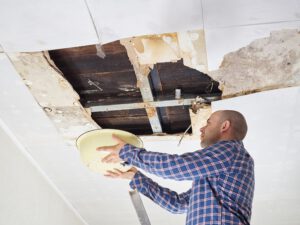Upright pianos are difficult to move but can be done with a team. Call in Piano Movers In North Charleston SC.
It’s also important to measure all doorways, staircases, and hallways to make sure the piano will fit.

Pianos are incredibly large, heavy musical instruments that can pose a significant challenge for anyone trying to move them. Their weight comes from the numerous components they contain, including high-tensile steel strings that vibrate to produce sound when hammers hit them. These stringed behemoths also have complex mechanical systems under the hood, such as a network of levers and pedals. As such, it’s not uncommon for a single piano to weigh more than several hundred pounds.
Even upright pianos, which are around 6′ in size, can easily top 350 pounds. Grand pianos are even heavier, requiring at least four strong movers to safely handle one.
Because of their weight, a moving company should be hired for the job if possible. However, if you decide to attempt the move yourself, make sure you have plenty of helpers on hand and prepare the right supplies. You’ll need a furniture dolly with four wheels, which will make it easier to roll the piano across flat surfaces than carrying it. You’ll also want to use some moving blankets and a piano board (also known as a piano skid board).
Recruit a team of movers with good balance and strength who are in reasonably good shape. Be sure to avoid hiring anyone who has a history of back, leg, or hip injuries. Also, be sure that everyone wears comfortable clothing with shoes with good traction and no dangling jewelry or accessories that could get caught on the piano’s frame.
Before the day of the move, map out your route and measure all doors, hallways, and staircases to ensure that the piano will fit. It’s important to assess these dimensions in advance so that you don’t end up enlisting help, purchasing supplies, and then discovering the piano won’t fit.
The first step is getting the right tools. This includes moving blankets to protect the piano from scratches and damage, as well as a dolly that can support the weight of the instrument. It’s also a good idea to purchase or rent heavy-duty piano straps that will help to distribute the weight and make it easier to lift.
You’ll also want to check the size of your truck or van to ensure that it can accommodate the piano. It’s important to have at least four people helping to move the piano, including one person who can drive the dolly. Ideally, you should ask friends and family members who are physically capable of lifting the piano and don’t have any back or shoulder issues.
When it comes time to lift the piano, have two of the movers on each end begin by squatting and doing a “1-2-3” count to help avoid back strain. Once the piano is lifted, the third person can support it from behind and help to guide the dolly as it’s rolled down the stairs or through the doorway of your new home.
Once the piano is in your truck or van, be sure to secure it with ratchet straps and remove the music rack, legs, and pedals. You’ll want to place it near the back of the vehicle so that it will be easy to load onto a ramp at your destination. The last thing you want is to unload your piano only to find that it has been damaged in transit. A scratch or ding is bad enough, but it’s even worse when the piano’s internal components are damaged. Leaving the job to professionals will prevent this from happening.
Getting the right equipment and having a team of people to help move something as heavy as a piano is critical. But it is also important to do your research before hiring someone to move your piano. A good place to start is by asking for referrals from friends and family members who have recently moved. If they are willing to do so, ask them for the names and phone numbers of movers who have helped them move their pianos. This will help you narrow down your options and find the best movers for the job.
Another way to do your research is to visit a moving company’s website and read about their experiences with moving pianos. Look for information on whether they have moved grand pianos, what type of pianos they have moved, and how recently they have done so. If a moving company doesn’t mention that they are experienced in moving these types of items, this is a red flag and should be taken into consideration.
Upright pianos are heavy and awkward to maneuver, so you will need at least four people to help move them. Make sure to clear a path before the movers arrive so they can maneuver your instrument easily through any doorways or hallways. It is also a good idea to wear comfortable shoes and clothing when you are helping move your piano. Trousers that are too tight could rip when you are stooping over it and wearing long necklaces or bracelets can get stuck in the tiny spaces of your piano.
If you can’t bring yourself to move your piano, sell it or donate it. But be careful about putting it in storage. The constant up and down and temperature changes can cause serious damage to the piano.
When looking for movers to move your piano, you want people who have experience with this type of move. Many moving companies that specialize in pianos will have a list of references they can provide you with. These are customers who have used their services in the past and have been happy with their service. This is a great way to see what other people think of the company’s work and how well they handle delicate items like a piano.
It’s also important to ask about any additional charges, such as disassembly or reassembly fees. You don’t want to be surprised with any added costs when the time comes for the movers to do their job. Some movers charge for these extra services, while others will include them in the initial quote.
Another thing to remember is to clear a path. The movers will need to be able to maneuver the piano through doorways, hallways, and staircases. This means that other furniture should be moved out of the way prior to the movers arriving. This will make it easier for everyone involved.
Moving a piano is not an easy task, and it’s definitely not something that should be done on your own. It takes a lot of strength, coordination, and knowledge. It can be dangerous for those who don’t have the proper equipment or aren’t experienced with this type of work. There are a lot of risks involved, from sprained muscles to broken toes and backs.
It’s best to leave this type of work to the professionals so that your precious instrument arrives at its new home undamaged. You might be tempted to save some money or impress that girl down the hall in Apartment 4F, but it’s not worth the risk.
The most important step in moving a piano is to hire a professional company. They will have the tools and equipment necessary to move this heavy and fragile instrument safely. They will also be able to avoid common mistakes that amateur movers often make.
Hiring a piano moving company can save you time and money in the long run. Replacing a piano is expensive, and it can be even more costly if it sustains damage during the move. A reputable piano mover will take the time to prepare for your move, including measuring the dimensions of doorways, hallways, staircases and other passageways in both your old home and new home. They will also help you plan a route, and clear obstacles by opening or removing doors or taking furniture off of their hinges.
It is also a good idea to ask for insurance documents when hiring a piano mover. A reputable company will be able to provide you with proof of general liability insurance, as well as cargo and bailee property coverage. In addition, they will be able to explain any additional policies that may be applicable, such as workers’ compensation.
Moving a piano is not an easy task, and it can be dangerous for anyone who isn’t familiar with the process. Inexperienced movers can easily cause damage to the piano and injure themselves in the process. By following these tips, you can find a reputable piano moving company to help with your move. In the end, it is always worth the investment to avoid making any mistakes that can be costly.
